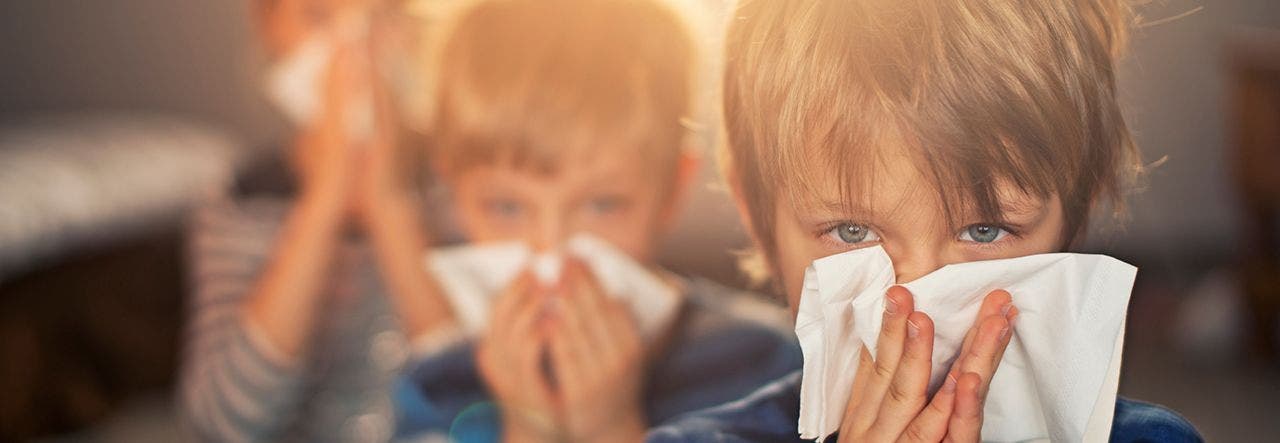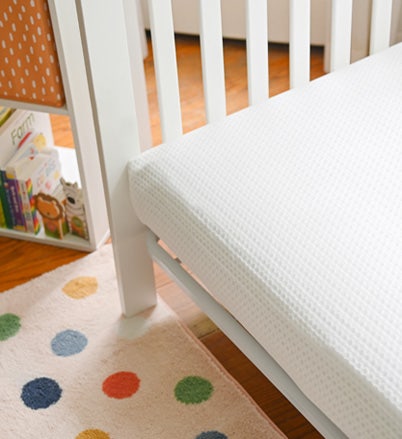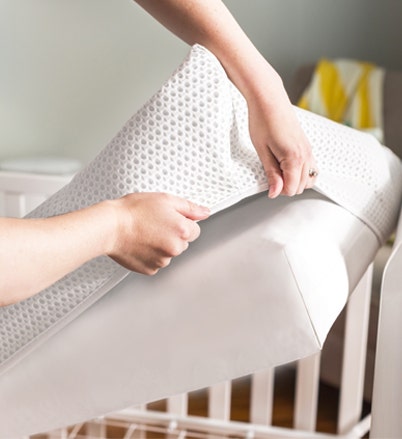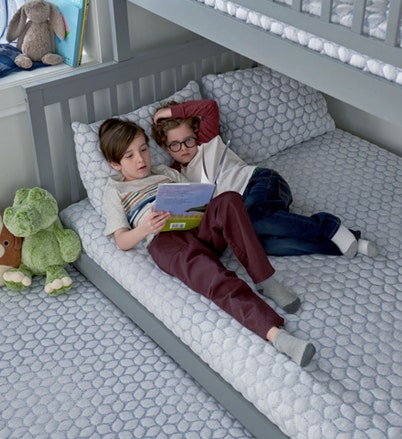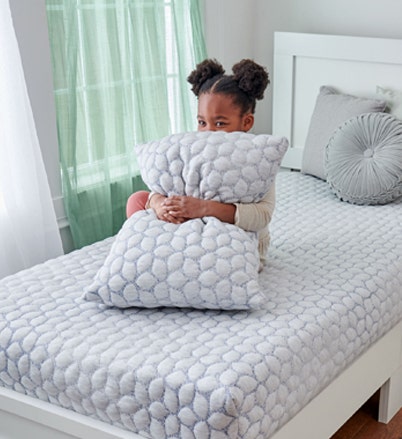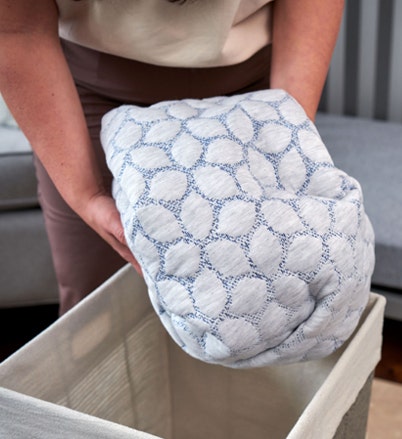Fall Seasonal Allergies and Your Child’s Sleep
As the crisp fall air rolls in and leaves start to change, many families look forward to cozy nights and outdoor fun. However, for children with seasonal allergies, fall can bring more than just excitement – it can also mean sneezing, congestion and restless nights. Allergies can significantly impact your child’s sleep, making it harder for them to get the rest they need.
Let’s explore common fall seasonal allergies, how they affect your child’s sleep and practical tips to help your little one breathe easier and sleep better during the season.
Fall Seasonal Allergies to Watch Out For
As autumn sets in, many families look forward to cooler days and the beauty of changing leaves. Unfortunately, autumn also brings allergens.
For example, some plants like ragweed, continue to release pollen well into the fall. Mold thrives in damp conditions and is often found in piles of fallen leaves, compost and other outdoor debris. Inside the house isn’t safe either! Dust mites live indoors, so spending more time inside can lead to more dust mite exposure. And when the heater gets turned on, it can release mites that have made their way into ducts or filters.
Other allergy triggers to be mindful of include:
- Pet dander from spending more time indoors
- Smoke and soot from wood burning
- Seasonal changes in temperature and humidity
Early in the season, take steps to minimize your child's exposure to their allergies. This will help them stay comfortable throughout the season while enjoying all the fun fall has to offer.
So What About Allergies and Sleep?
Fall seasonal allergies can make sleep difficult for kids because of allergy symptoms they may experience. Nasal congestion, itchy eyes and post-nasal drip can interfere with their ability to fall asleep and stay asleep. They may wake up more throughout the night, leaving them feeling tired and irritable during the day. Poor-quality sleep can lead to issues during the day like difficulty concentrating, mood changes and behavioral challenges. Addressing your kiddo’s allergies early can help ensure they get the sleep they need to thrive, even during the height of allergy season.
Other Fall Seasonal Allergy Symptoms in Kids
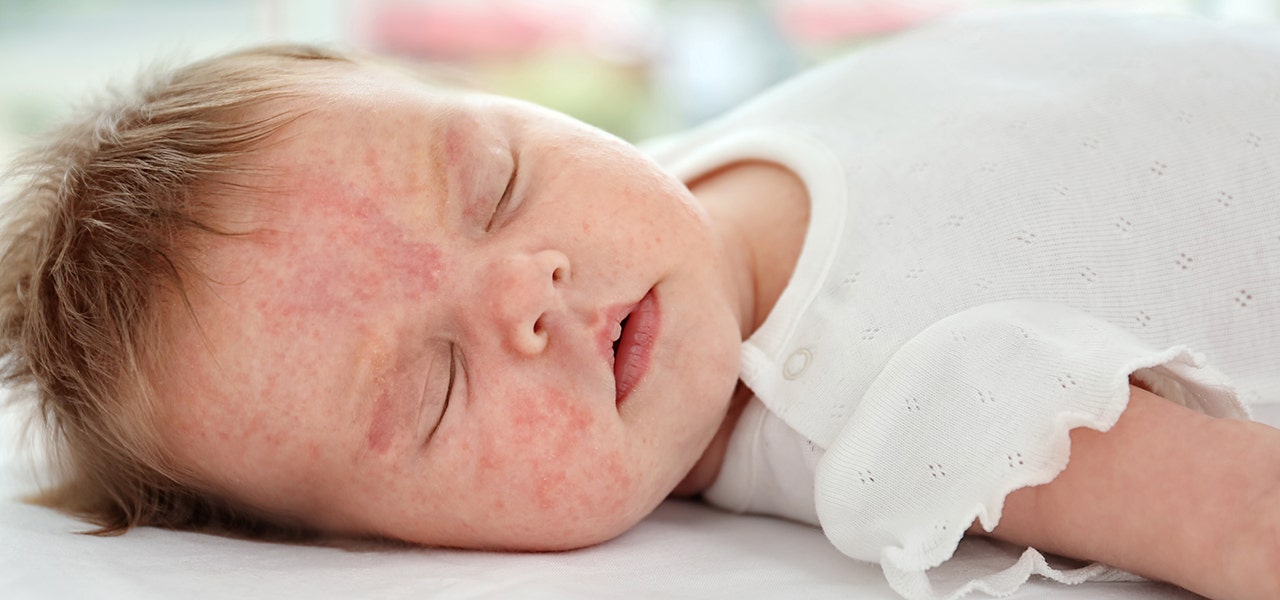

Beyond affecting sleep, fall allergies can cause a variety of seasonal allergy symptoms in kids including:
- Runny nose
- Sneezing
- Congestion
- Itchy or watery eyes
- Coughing
- Wheezing or asthma flare-ups
- Fatigue
- Dark circles under the eyes (also known as allergic shiners)
These symptoms can vary in intensity depending on your child’s exposure and how sensitive they are to different allergens.
3 Tips for Reducing Allergens in the Nursery
Since allergies and sleep are so connected, creating a clean, allergen-free environment is essential for helping kiddos sleep better during allergy season. Here’s three practical ways to reduce allergens in the nursery.
Cleaner Cleaning Products
Many conventional cleaning products contain harsh chemicals that can aggravate allergies. Whenever possible, opt for natural, fragrance-free cleaning products to reduce exposure to irritants like fragrances and other triggering chemicals. Products certified by organizations like the Environmental Working Group (EWG) can provide safer, less toxic alternatives. Use microfiber cloths to capture dust and regularly clean surfaces in the nursery to limit allergens like dust mites and mold spores.
Air Quality Control
Improving indoor air quality can go a long way in easing allergy symptoms. An air purifier with a HEPA filter traps allergens like dust, pollen and mold. Make sure to regularly clean or replace the air filters in your home’s HVAC system too. Closing windows during high pollen days and ensuring proper ventilation can further help reduce allergen buildup.
Allergy-Friendly Bedding
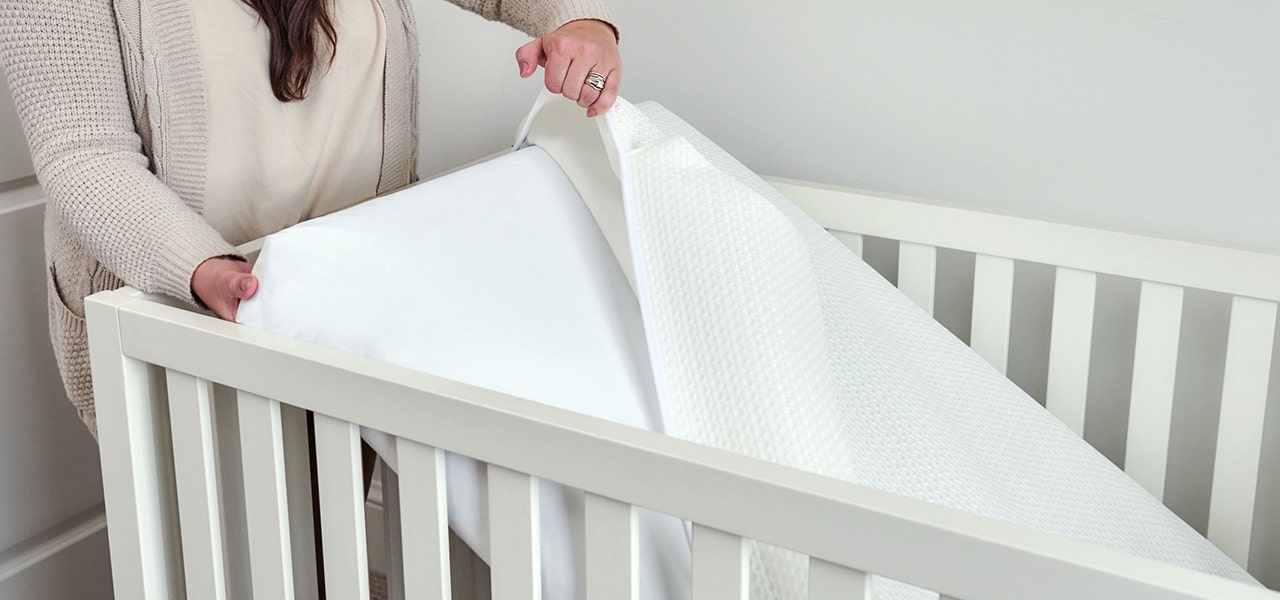

Kids spend a significant amount of time in their cribs and beds, so creating an allergy-safe sleep environment is key. Choosing the right products can make a major difference in keeping allergens at bay.
Opt for mattresses that avoid harsh chemicals or potentially toxic materials. Consider the Lullaby Earth Dream Easy Kids Mattress or Breathe Safe Breathable Crib Mattress. These mattresses are made without known allergens like latex, questionable fire retardants, polyurethane foam (including soybean foam blends), vinyl/PVC and antibacterial treated fabrics, which could irritate your child’s allergies. We want kiddos to focus on counting sheep, not icky allergy symptoms.
Using a high-quality mattress cover, like the Lullaby Earth Waterproof Mattress Protector Pad, adds an extra layer of protection between your slumbering kiddo and potential allergens. These are easy to remove and machine washable, making it simple to keep your child’s sleep space clean. Opting for protector pads that are made without known allergens helps ensure your kiddo sleeps comfortably, even during fall allergy season.
More Precautions and Natural Remedies for Allergies
If you prefer to take a more natural approach to managing your child’s allergies, there are several options.
Essential Oils and Diffusers
Certain essential oils, such as eucalyptus, lavender and peppermint, can open up airways and promote easier breathing. You can use them in a diffuser in your child’s room. Just be sure to consult with a healthcare provider before using essential oils around young children because some oils may not be safe for all ages.
Natural Nasal Relief
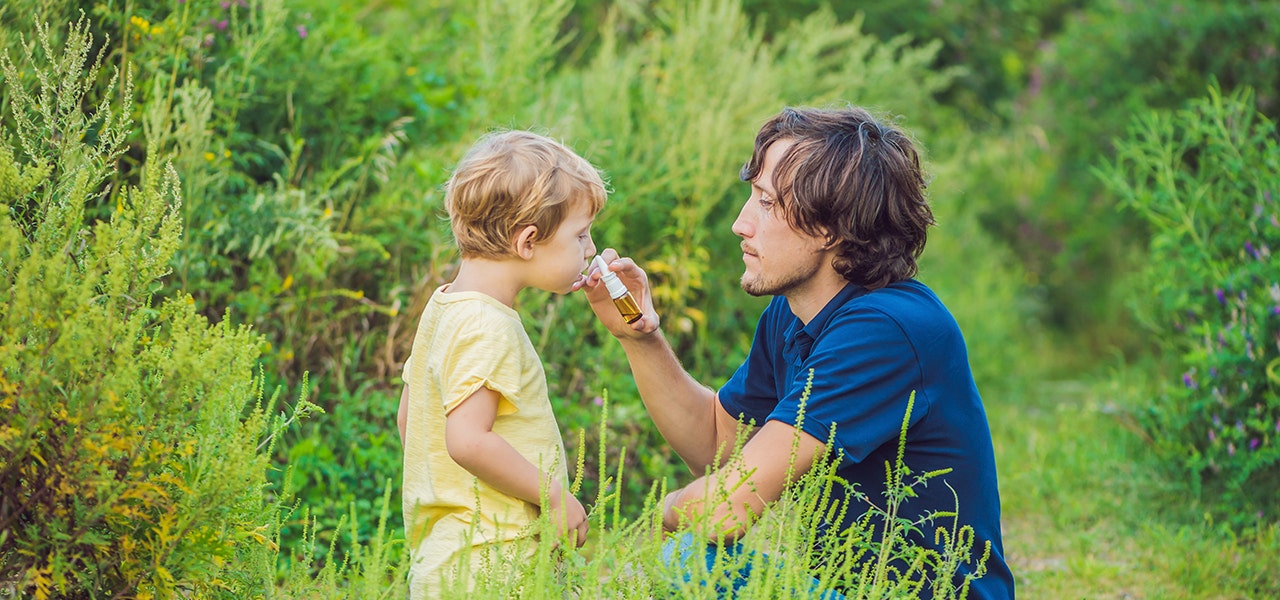

Using a saline nasal spray can help clear your child’s nasal passages. Saline sprays are a gentle, drug-free way to reduce mucus buildup and soothe irritated nasal tissues. Another option is a nasal rinse though this may be better suited for older children who can handle the process.
Limiting Outdoor Allergen Exposure
While outdoor play is essential to a child’s development, it’s important to minimize exposure to outdoor allergens, like pollen. Check pollen counts and avoid outdoor activities during peak pollen times. When your child does play outside, have them change clothes and wash off any allergens clinging to their skin and hair.
When to Consult a Pediatrician About Fall Seasonal Allergies
If your child’s allergy symptoms persist or worsen despite your best efforts, it may be time to consult a pediatrician. A doctor can help determine whether your child would benefit from allergy testing or prescription medications. Don’t hesitate to seek medical advice if allergies are significantly affecting your child’s quality of life or sleep.
Fall can be a challenging time for children with seasonal allergies, but with the right strategies in place, you can help your kid breathe easier and sleep better.
Want to keep learning how to minimize exposure to environmental toxins for your baby or kiddo? Check out our blog on endocrine disruptors (Here’s a sneak peak: they’re in pesticides, parabens and phthalates).

 Baby
Baby
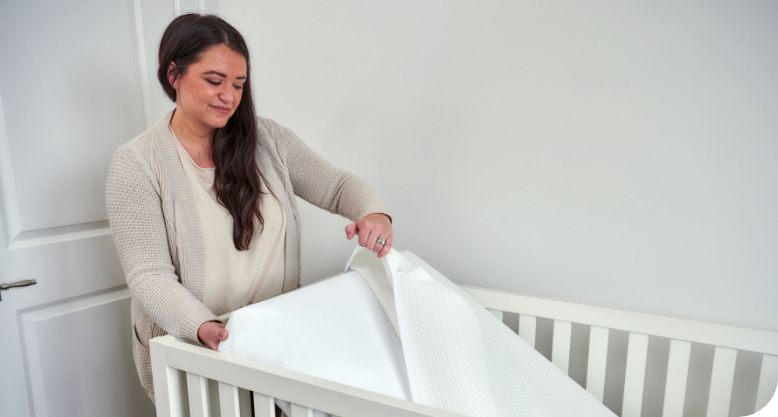
 Kids
Kids
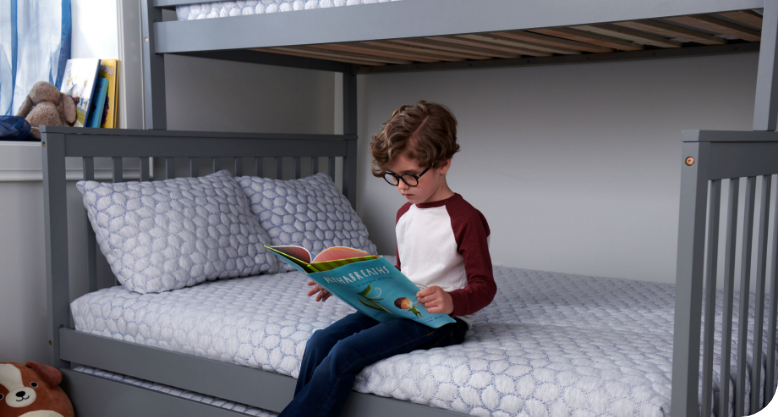
 Learn
Learn
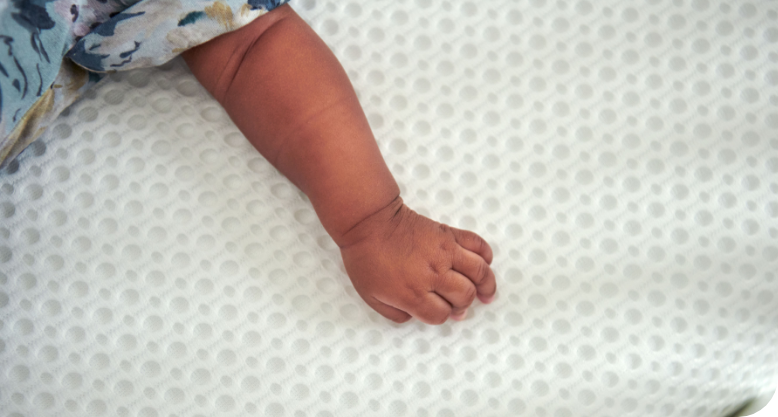
 FIND A STORE
FIND A STORE CONTACT
CONTACT